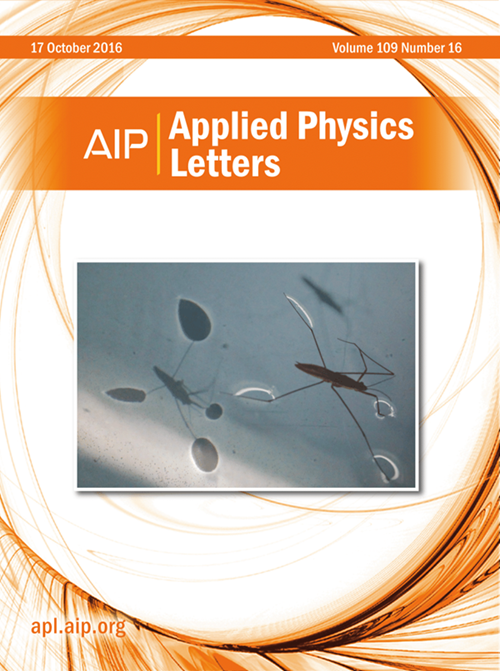二维金属铁磁和铁电多铁质异质结构的高性能非易失性自旋场效应管
IF 3.5
2区 物理与天体物理
Q2 PHYSICS, APPLIED
引用次数: 0
摘要
基于二维多铁范德华异质结构的全电控非易失性自旋场效应晶体管(sfet)在自旋电子学中具有重要的应用前景。然而,它们的性能受到能够在金属和半导体状态之间切换的二维磁性材料的有限可用性的限制,这些材料具有由铁电极化控制的可调带隙。大多数研究都集中在修饰半导体材料以达到金属性能。我们提出了一种利用界面效应将金属二维磁性材料转化为半金属并通过铁电极化诱导半半导体行为的方法。对CrPS3/Sc2CO2异质结构的密度泛函理论(DFT)计算表明,Sc2CO2极化可以调制CrPS3的电子结构,使其从半金属变为半半导体。利用该方法设计了一个fet,非平衡格林函数结合DFT (NEGF-DFT)分析表明,该器件的通断电流比大于5.43 × 106%,自旋极化电流接近100%,电压为6500 μA/μm,偏置电压低于0.2 V。这种方法为超越当前2D材料的高性能sfet铺平了道路。本文章由计算机程序翻译,如有差异,请以英文原文为准。
High-performance nonvolatile spin FETs from 2D metallic ferromagnetic and ferroelectric multiferroic heterostructure
All-electric-controlled nonvolatile spin field-effect transistors (SFETs) based on 2D multiferroic van der Waals heterostructures hold significant promise for spintronics. However, their performance is constrained by the limited availability of 2D magnetic materials capable of switching between metallic and semiconducting states, with tunable bandgaps controlled by ferroelectric polarization. Most research focuses on modifying semiconducting materials to achieve metallic behavior. We propose an approach that utilizes interface effects to convert metallic 2D magnetic materials into half-metals and induce half-semiconducting behavior via ferroelectric polarization. Density functional theory (DFT) calculations on the CrPS3/Sc2CO2 heterostructure show that Sc2CO2 polarization can modulate the electronic structure of CrPS3, switching it from half-metallic to half-semiconducting. Using this approach, we designed an SFET, and Nonequilibrium Green's function combined with DFT (NEGF-DFT) analysis revealed an on/off current ratio greater than 5.43 × 106%, with nearly 100% spin-polarized current at 6500 μA/μm and a bias voltage below 0.2 V. This method paves the way for high-performance SFETs that exceed the capabilities of current 2D materials.
求助全文
通过发布文献求助,成功后即可免费获取论文全文。
去求助
来源期刊

Applied Physics Letters
物理-物理:应用
CiteScore
6.40
自引率
10.00%
发文量
1821
审稿时长
1.6 months
期刊介绍:
Applied Physics Letters (APL) features concise, up-to-date reports on significant new findings in applied physics. Emphasizing rapid dissemination of key data and new physical insights, APL offers prompt publication of new experimental and theoretical papers reporting applications of physics phenomena to all branches of science, engineering, and modern technology.
In addition to regular articles, the journal also publishes invited Fast Track, Perspectives, and in-depth Editorials which report on cutting-edge areas in applied physics.
APL Perspectives are forward-looking invited letters which highlight recent developments or discoveries. Emphasis is placed on very recent developments, potentially disruptive technologies, open questions and possible solutions. They also include a mini-roadmap detailing where the community should direct efforts in order for the phenomena to be viable for application and the challenges associated with meeting that performance threshold. Perspectives are characterized by personal viewpoints and opinions of recognized experts in the field.
Fast Track articles are invited original research articles that report results that are particularly novel and important or provide a significant advancement in an emerging field. Because of the urgency and scientific importance of the work, the peer review process is accelerated. If, during the review process, it becomes apparent that the paper does not meet the Fast Track criterion, it is returned to a normal track.
 求助内容:
求助内容: 应助结果提醒方式:
应助结果提醒方式:


